|
Standalone System
Data Entry, Update and Viewing
Database
Data Access Method
Report Writer |
Multi User - Multi Location
Data Entry, Update and Viewing
Database
Data Access Method
Transaction Log
Data Extraction
Local Data
Report Writer |
|
Data Entry, Update and Viewing
|
Back to Top
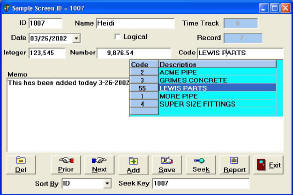 |
|
The major interaction users have with computer information systems
should be through the use of computer application screens. These screens
can be used for entering, updating and correcting information. Also
screens can be designed to provide the latest information upon request.
The application should be easy to use allowing people to maintain their
own information while making it available to all who need it. The
screens should use techniques and building blocks that are commonly used
in popular computer applications. These building blocks of a screen are
called controls. They include text boxes, check boxes and date entry
controls. Examples of these are described in the
Screen Blocks page.
|
|
Database
|
Back to Top
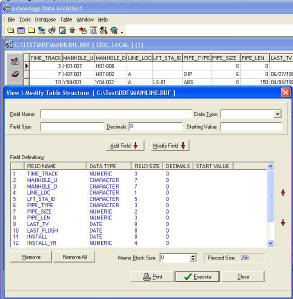 |
|
Most modern computer information systems use a database to store the
information. This can be a simple file system like dBase or an
application database like Microsoft Access. Larger systems will use
database servers like Advantage, SQL Server and Oracle. Many times an
application will start out small used by only a few people and then grow
to many users. So, the ability to scale an application from small to
large can be important. The major factor that influences the utility and
productivity of a computer information system is the ability of the
users to understand and interact with the information. Therefore, the
database design should be translatable into a simple set of tables to
which users can relate.
|
|
Data Access Method
|
Back to Top
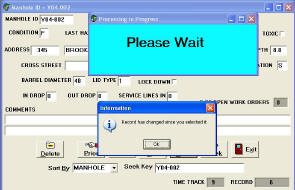 |
|
In multi-user systems data access must be controlled to prevent
corruption or loss. Two popular methods could be called Library Check
Out and Transaction Processing.
The Library Check Out method or some variation of it is used in many
applications. This is a method like checking out a book from the
library. Only one person can have the book at a time. This can work well
in a small network of local computers where users rarely work with the
same item of information. But, sometimes in large geographically
disperse systems information can be lost. This can lead to mistrust of
the system and lost user time checking to make sure information is
correct.
The Transaction Processing method is like making a reservation through a
modern computer system. A person makes a request and the the reservation
is made or rejected. In the example above, the system indicates a wait
state while the system attempts to make the update. If the update is
rejected a message shows the reason.
|
|
Transaction Log
|
Back to Top
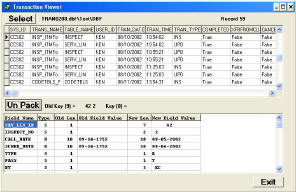 |
|
The transaction log shown here is from a Transaction Processing system
that records the time, date, who and computer used for the transaction.
It also records the before and after values for each field that changed.
While some of this information might be useful for tracking the use of
the computer information system. The major utility of this log is to
provide a simple source for synchronizing the information in a backup or
portable system.
|
|
Data Extraction
|
Back to Top
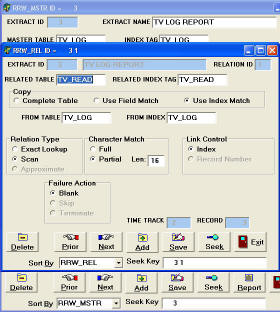 |
|
Report writers and report programs must select information from the
database to start the reporting process. This requires moving the data
to a working directory on the local machine. While many report writers
do this as part of the report generation process, the extraction process
can be performed more efficiently by a program that understands the data
environment. Also one extraction can be used to generate multiple
reports. The data for all reports is the same regardless of on going
updates. This also prevents multiple users from interfering with each
other since the extraction resides on their own local computer. Using
one simple interface that can be used with many different databases
limits the education needed, making the information more available to
the user.
|
|
Local Data
|
Back to Top
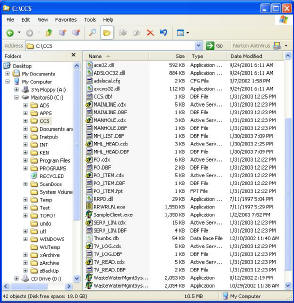 |
|
When data is extracted from a database system it is stored on the local
computer. This makes it easily accessible for multiple reports as
needed. Reports that involve complex interaction where the information
is processed repeatedly can be done efficiently because all of the data
is on the local computer.
|
|
Report Writer
|
Back to Top
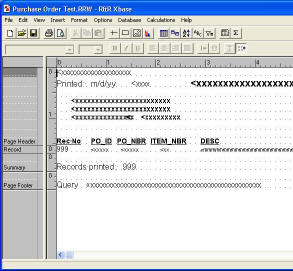 |
A report writer as show here is a computer application that allows a
user to layout a report similarly to a word processor. You can choose
fonts and graphics to convey the message as needed. Also, data items
from the database can be placed on the report in the appropriate places.
While it requires some education to produce a complex report from
scratch, it can be a very simple task to update a report or make a new
report from an existing one.
This capability of accessing the information in a database to produce a
report as needed can be the most valuable feature of a computer
information system. Users can learn to produce reports in minutes
instead of making requests of computer professionals.
|
| |
Back to Top
|
